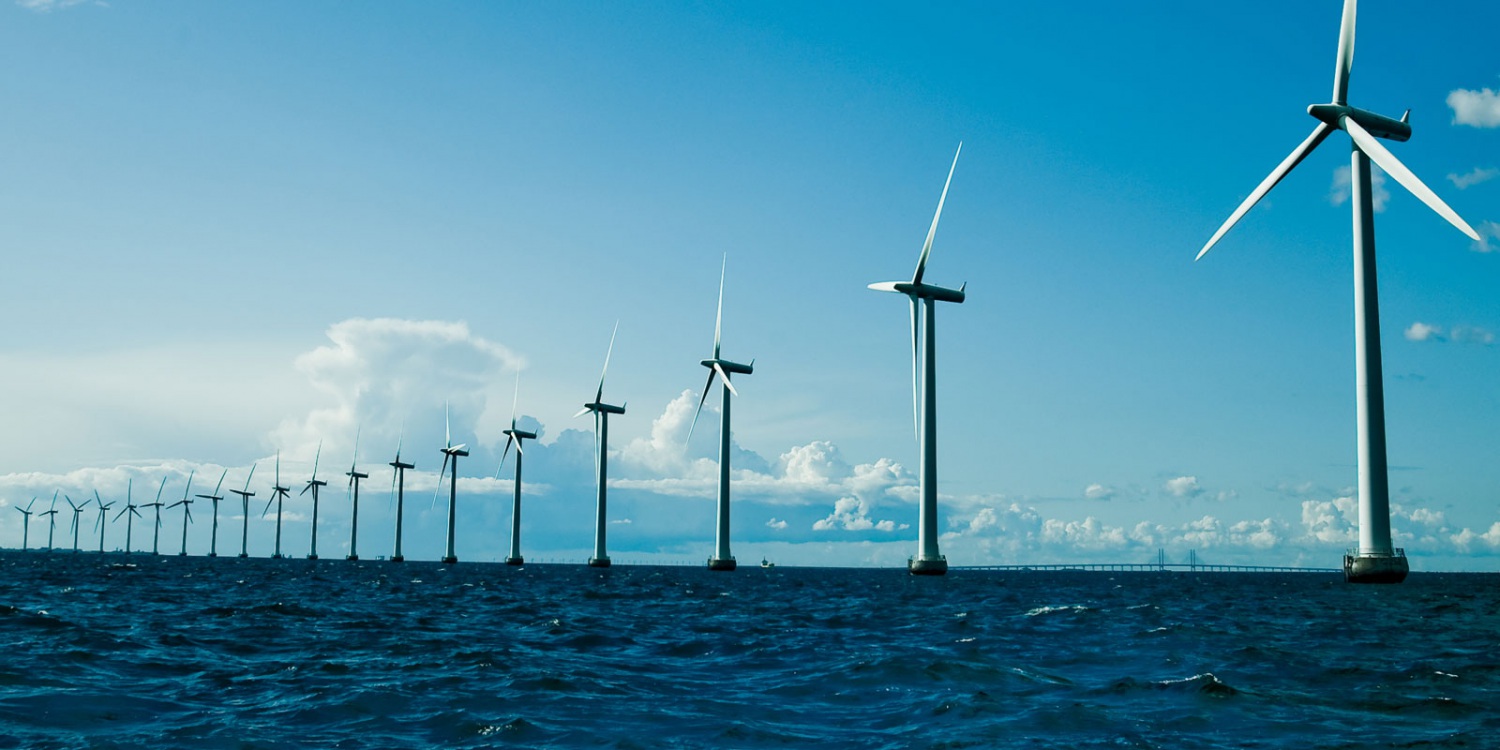Offshore Wind Turbines
Offshore wind turbines harness the power of wind over the ocean to generate renewable electricity. This technology has the potential to significantly reduce greenhouse gas emissions and contribute to global energy needs.

Offshore Wind Turbines (Environment America)
tip
Learn more from The Business Network for Offshore Wind, a 501(c)(3) nonprofit advocate.
job openings
View open jobs in this Solution
Example Companies
- Vestas - Develops and manufactures wind turbines, including offshore models.
- GE Renewable Energy - Produces advanced offshore wind turbines like the Haliade-X.
- Siemens Gamesa - A leader in offshore wind technology and services.
- Ørsted - Develops and operates offshore wind farms globally.
- Equinor - Invests in and operates offshore wind projects.
Overview
Offshore wind turbines harness the power of wind over the ocean to generate renewable electricity. Innovations like floating turbines and subsea cabling have emerged, allowing for greater deployment in deeper waters and more challenging environments.
Learn More
- Offshore Wind: The untapped potential of harnessing the wind at sea - Climate Tech Distillery
Progress Made
Significant advancements have been made in offshore wind turbine technology:
- Floating Turbines: Allows for deployment in deeper waters where wind speeds are higher and more consistent.
- Subsea Cabling: Improved cabling technology for efficient transmission of electricity from offshore turbines to the grid.
- Larger Turbines: Development of larger turbines with higher capacity and efficiency.
Solutions by Sector
Offshore Wind Farms
- Fixed-Bottom Turbines: Traditional turbines anchored to the seabed, suitable for shallow waters.
- Floating Turbines: Turbines mounted on floating platforms, ideal for deep waters.
- Hybrid Systems: Combining offshore wind with other renewable sources like wave energy.
Case Studies:
- Hornsea One, UK: World's largest offshore wind farm, generating enough electricity to power over one million homes (Ørsted).
- Hywind Scotland, UK: First commercial floating wind farm, showcasing the potential of floating turbines (Equinor).
- Block Island Wind Farm, USA: First offshore wind farm in the United States, providing clean energy to Rhode Island (Deepwater Wind).
Research and Development
- Advanced Materials: Developing materials that enhance turbine durability and efficiency.
- Aerodynamic Design: Improving blade design for better performance and reduced noise.
- Energy Storage: Integrating storage solutions to manage intermittent wind energy.
Case Studies:
- WindFloat Atlantic, Portugal: Demonstrates floating wind technology with advanced materials and design (WindPlus).
- Beatrice Offshore Wind Farm, UK: Utilizes innovative blade designs and materials for improved performance (SSE Renewables).
- Hornsea Project Two, UK: Incorporates energy storage to enhance grid stability (Ørsted).
Environmental and Social Impact
- Marine Ecosystem Protection: Implementing measures to minimize the impact on marine life.
- Community Engagement: Involving local communities in planning and decision-making processes.
- Job Creation: Generating employment opportunities in construction, maintenance, and operation of offshore wind farms.
Case Studies:
- Walney Extension, UK: Largest operational offshore wind farm, with measures to protect marine life (Ørsted).
- Vineyard Wind, USA: Engages local communities and stakeholders in the development process (Vineyard Wind).
- Dogger Bank Wind Farm, UK: Expected to create thousands of jobs and contribute to local economies (SSE Renewables).
Lessons Learned
- Early-Stage Nature: Offshore wind technology is still evolving and faces challenges. Past failures, like the collapse of the first commercial offshore wind farm in Denmark (1991) and blade issues with a prototype in the UK (1994), highlight its early-stage nature.
- Cost Challenges: Offshore wind energy remains comparatively expensive, struggling to compete with fossil fuels.
- Construction and Maintenance Complexity: Building and maintaining offshore turbines demand specialized vessels, equipment, and resilience against severe weather.
- Ongoing Research Need: Continued research and development are essential to enhance turbine efficiency and cost-effectiveness.
Challenges Ahead
- High Initial Costs: Building and installing offshore turbines are expensive, averaging $4,000 per kW compared to onshore turbines at $1,800 per kW. Infrastructure like transmission lines also adds to costs.
- Environmental Impacts: Concerns encompass noise and visual pollution, along with potential bird and bat collisions.
- Grid Integration: Ensuring that offshore wind energy can be efficiently integrated into the existing grid infrastructure.
Best Path Forward
- R&D Investment: Continued research is vital to enhance technology and cost-effectiveness.
- Large-Scale Adoption: Policies mandating turbine use or financial incentives can promote widespread adoption.
- Industry Collaboration: Partnerships like the European Offshore Wind Deployment Centre and governmental agencies such as the Danish Energy Agency and Massachusetts Clean Energy Center are essential in propelling this solution forward.
- Environmental Mitigation: Implementing measures to protect marine life and minimize environmental impacts.
- Public Engagement: Increasing awareness and involvement of local communities in offshore wind projects.
Image credit: Environment America